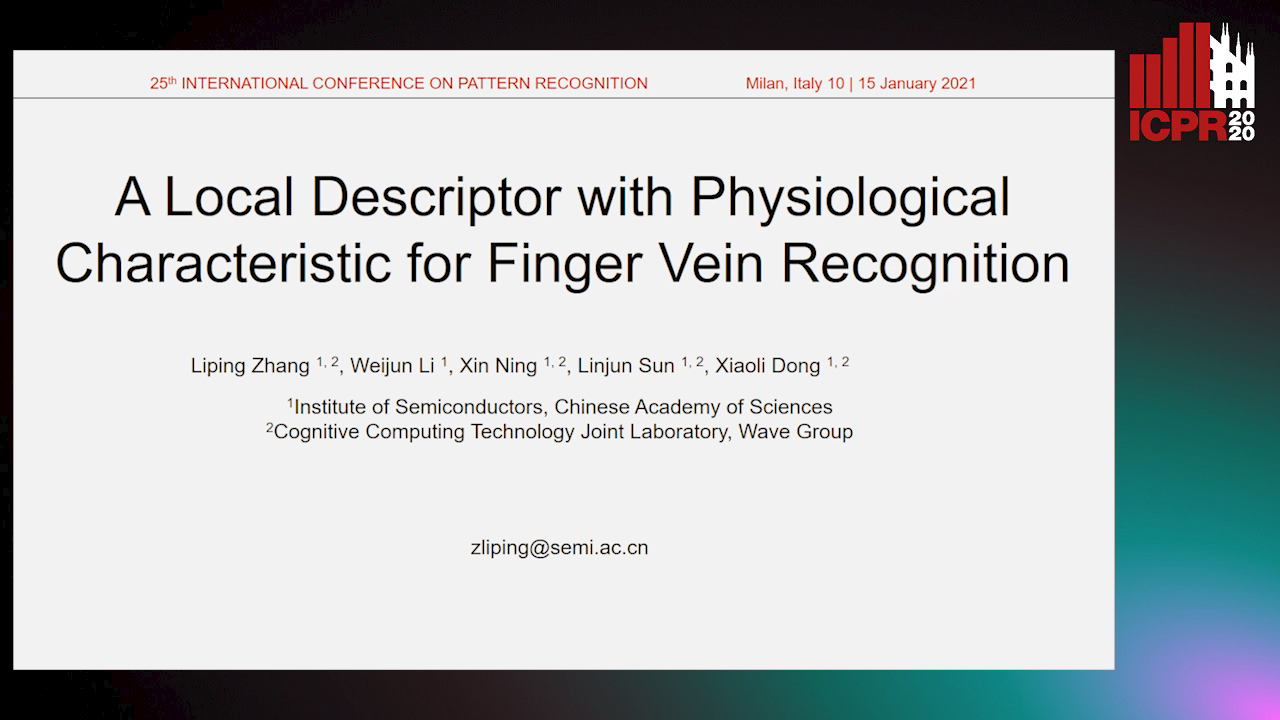Weijun Li
Papers from this author
A Local Descriptor with Physiological Characteristic for Finger Vein Recognition
Liping Zhang, Weijun Li, Ning Xin

Auto-TLDR; Finger vein-specific local feature descriptors based physiological characteristic of finger vein patterns
Abstract Slides Poster Similar
Continuous Learning of Face Attribute Synthesis
Ning Xin, Shaohui Xu, Fangzhe Nan, Xiaoli Dong, Weijun Li, Yuanzhou Yao

Auto-TLDR; Continuous Learning for Face Attribute Synthesis
Abstract Slides Poster Similar